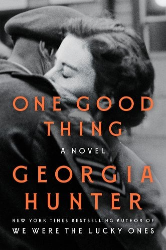Ferrara is one of the many small, charming cities that dot northern Italy. Developed in the Renaissance under the ducal family of Este, Ferrara was home to notable writers and artists before passing into a long decline in the eighteenth and nineteenth centuries. The city had a small but vibrant Jewish community and among its early twentieth century denizens was Giorgio Bassani, who would put Ferrara on the map of the literary imagination. The Novel of Ferrara is the compilation of Bassani’s major writings about the city, including The Garden of the Finzi-Continis (his best-known work thanks to the titular 1970 film by Vittorio De Sica). The anthology focuses mainly, although not exclusively, on Ferrara’s Jewish inhabitants in the period of the 1930s and early ‘40s. Bassani first published the four novels, five stories, and handful of sketches included here as separate works in the 1950s and ‘60s and then as a single volume in the ‘70s in Italy; the present volume is the first complete English-language translation of this major milestone in twentieth-century Italian letters. It also stands as a memorial to the loss of a vital Jewish community.
Bassani was born in 1916 to an upper-middle class Italian Jewish family (like his anonymous narrator in The Garden of the Finzi-Continis). He came of age just as the Fascist regime in prewar Italy moved to align more closely with the antisemitic policies of its Nazi allies in Germany. Since the Italian Risorgimento in the 1860s and ‘70s, Jews in Italy had, to a large extent, assimilated into the majority culture and had achieved considerable success in a number of professions, as well as social acceptance (or at least tolerance). Many were supporters of Mussolini and his Fascist party. The Italian racial law of 1938 that restricted the rights of Italian Jews changed all that; Jews were expelled from schools and universities, and social and political organizations, barred from marrying non-Jews, forced to sell their businesses, and banned from employing “Aryans.”
At least until the outbreak of the Second World War in Europe, the indignities faced by Italian Jews, while significant and humiliating, were less threatening than those faced by Jews in Germany. There were no significant outbreaks of state-sponsored terrorism like Kristallnacht (although a few synagogues were vandalized or worse), and no mass roundups and detentions. The arrest and deportation of Jews to German death camps did not take place until after 1943, when, following the Allied invasion of Italy, German troops occupied northern Italy and put Mussolini back into power in the so-called Social Republic of Italy. Some 8−9,000 of Italy’s nearly 50,000 Jews were deported and killed in German camps. Many of Ferrara’s Jews escaped the city before the roundup and Bassani himself succeeded in avoiding capture. About a quarter of the remaining population was deported.
Other than one story, “A Night in ’43,” which centers on the public execution of a number of anti-Fascists, both Jews and gentiles, Bassani’s fiction avoids direct depictions of the brutal actions of the Fascist regime. Nonetheless, the fact of the Fascist government’s persecution of Jews and its later complicity with Nazi-engineered deportations echoes throughout Bassani’s work as a leitmotif underpinning the lives of the citizens of Ferrara. The Garden of the Finzi-Continis is suffused with the atmosphere of impending doom surrounding the characters but barely touches on the consequences. (De Sica’s film is far more explicit on this theme, a portrayal about which Bassani was unhappy.) The novel provides a moving portrait of several families – the narrator’s and the Finzi-Continis – attempting to retain some semblance of their way of life as that way of life is threatened. Their fate is told only indirectly in one scene, in which the narrator looks at his relatives gathered for the Passover seder and sees them as already dead. The isolation of the Finzi-Continis in their mansion set behind high walls is a powerful symbol of the fate of Ferrara’s Jews, as is the lingering illness of Alberto Finzi-Contini.
The Garden of the Finzi-Continis remains Bassani’s strongest work, with its multidimensional symbolism, its ambiguities, and its evocation of medieval romance (also evoked by the Italian title of this volume, Il Romanzo di Ferrara); but it achieves new resonance surrounded in this volume by the other pieces, in which characters and situations alluded to in The Garden echo and reverberate. Ferrara, with its wide boulevards and long city walls, its cafes and amusement parks, emerges as a living entity out of Bassani’s words. Several other stories also deal with the consequences of the plight of Ferrara’s Jews. “A Memorial Tablet in Via Mazzini” is a tale of one deportee from Ferrara who returns to find his name included on the eponymous memorial tablet. This young man becomes a memento mori and a source of discomfort to his fellow Ferraresi (Bassani suggests that he is the only survivor, while most sources indicate that there were more than one). The Heron, set in the postwar period, chronicles a day trip taken by a well-to-do Jewish survivor as he contemplates his life and whether he will have a future.Unlike other of Bassani’s fictions, The Heron is a third-person narrative and is a tour-de-force of minute-to-minute narrative and interior probing.
There are other themes at stake for Bassani in these stories, chief among them the coming of age of his alter ego narrator, and his struggles with his Jewish and sexual identities. These themes, latent in The Garden of the Finzi-Continis, are foregrounded in The Gold-Rimmed Spectacles and Behind the Door.
With the recent publication of Primo Levi’s complete works and the great popularity of Elena Ferrante’s Neapolitan tetralogy, postwar Italian writing, never totally neglected in the United States, is having its cultural moment. With this volume, Bassani’s major work once more takes its place in the spotlight.





